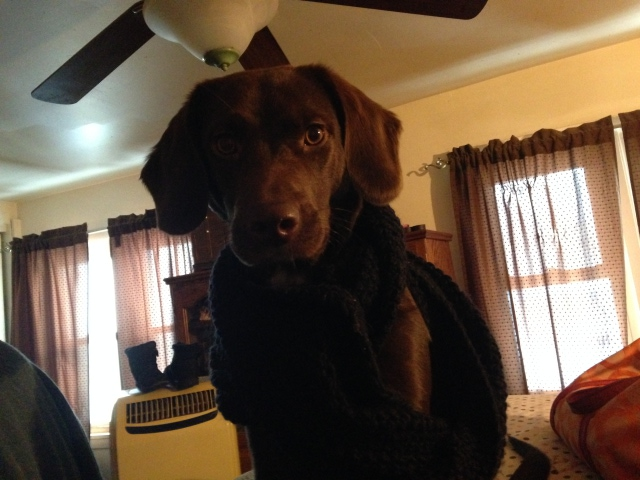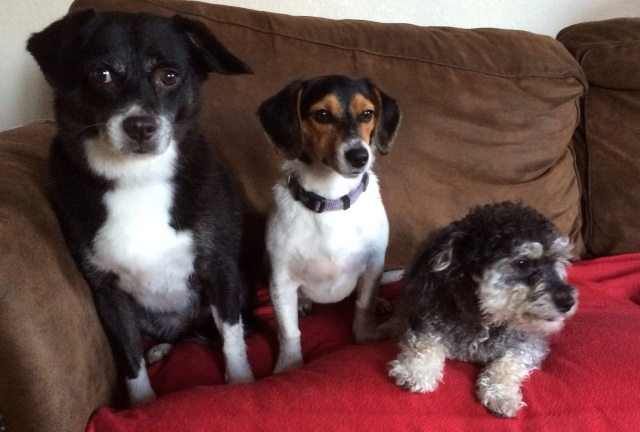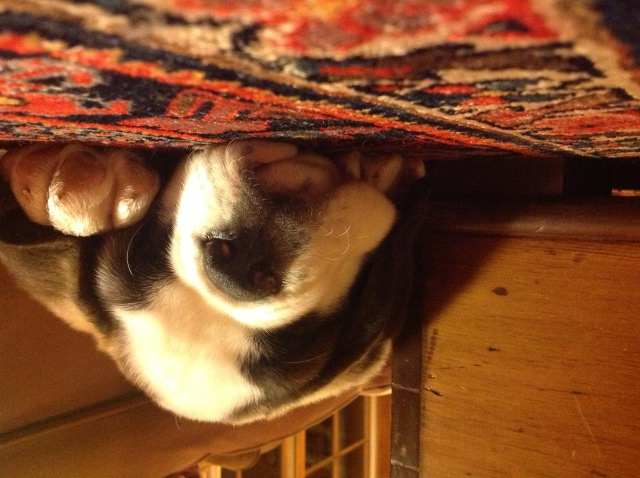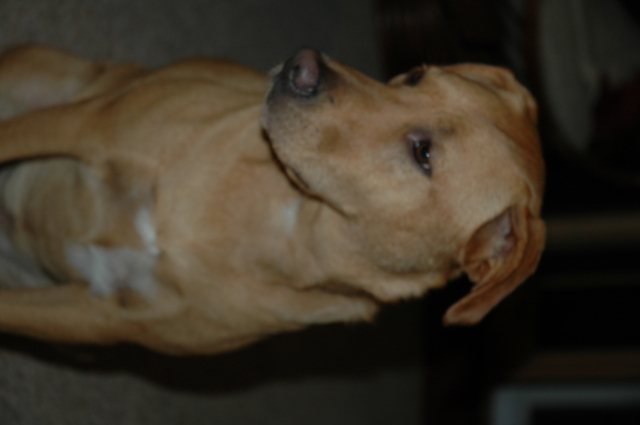QuestionI am fostering a 7 yr. old dachshund through a local humane society. He has severe anxiety problems. When put in a crate he defecates, urinates and possibly vomits (I am guessing because the smell is so horrible). He then somehow smears it everywhere on the crate and on himself. I have to keep him crated during the day, confining him to a room doesn't work, he still uses the bathroom (on the couch, carpet, tile...whatever room he is in). I cannot keep him confined by baby gate as he can clear them easily and just get into another room with carpet to urinate on that. I must give him three baths a week, plus cleaning out the cage. Once he is in the cage (which is a battle in itself because he hides, then urinates when you pick him up to put him in the crate) he continues to cry for an extended amount of time. He has started breaking out on his stomach (I am assuming because of the poop he is sitting in all day). I just need some advice on maybe why this is happening, how to prevent it. His normal bowels are not runny at all, so I don't understand what makes the times in the crate so different. When he doesn't get the attention he wants he will urinate on things that will get him the attention he needs (the bed, my lap, my pillow etc). Basically all of the things he is doing are making him virtually unadoptable and I just need some general advice. Thank you for any help you can give.
AnswerThis is a challenging issue for certain. I am including some basics about crate training, but think you may need to acclimate in a more "user firnedly" way for this dog. Work with some scrumtious treat and the ability to go in and out at will and work your way up to a longer time in the crate.
There are lots of articles on my web site that may help you piece together a training and conditioning program. You may benefit greatly from having a trainer with behavioral skills come and evaluate the dog and make suggestions. With this type of situation, it is often easiest to see what is going on.
As always, make sure you have a clean bill of health from your veterinarian.
There are lots of tips and information on my web site and blog
http://www.outlawchinooks.com/
http://www.outlawchinooks.com/articles.html
http://RileyTrainingCenter.blogspot.com
Good Luck!
~~~~~
Crate Training
Most dog owners, experts, veterinarians and trainers recommend crates (also called cages and kennels) as the best and safest way to raise a puppy. People who have never used a crate while training a puppy may initially be opposed to the thought of crating their pup, but after using a crate have discovered that the puppy loves the crate and it helps with housebreaking, traveling and keeping you sane.
Dogs are den animals and really like having a place of their own. It's like a dog apartment in your home, a place for pooch to get away from the confusion in your house and know it is in a safe haven. Think of your crate as a safe and secure place that your dog understands from his hard wiring of his wild ancestors. Remember not to anthropromorphize your feelings about a confined space. Dogs love to den and the crate is an excellent solution for them.
A crate allows you to train your puppy and have control over pup when you are not at home. Pups left home alone with too much roaming ability can become anxious, lonely and bored, all of which can lead to disasters in your home and for your pup. By using a crate, you create a positive behavioral pattern which enables the relationship between you and your dog to develop and grow in a positive manner.
Some additional benefits of crate training your dog:
Virtually eliminates house training problems and "accidents" in your house.
Saves you money in repairing and replacing damaged household items and furniture.
Assures that pup will learn good habits.
Eliminates the chance that you will give up your pup because you can't deal with behavioral issues.
There are many styles of crates available for your companion. You will most likely start with a wire or plastic crate. Wire crates offer plenty of ventilation and a good view of pup's surroundings. Plastic crates also have good ventilation and can be used to ship dogs on airlines. Some newer style crates are quite attractive and can match your home's decor.
Tips for Crate Training
Have a positive attitude toward crate training. You are helping your dog and doing them a favor by using the crate. A crate trained dog is more confident, more secure, has less stress and is a more functional member of your family.
Use a crate that will be the correct size for your adult size dog to stand up, turn around and lie down inside. If your pup will grow to be a bigger dog, create a smaller space for pup now by sliding in a piece of heavy cardboard or masonite about half way back in the crate. When pup gets bigger, simply remove the divider and the crate will be the right size.
Keep your crate in a semi-private space in the people part of your house like the kitchen or family room. Make sure your spot is away from drafts and direct heat.
Well before bedtime, place your pup in the crate and give a treat. Close and latch the crate door.
Immediately start a routine with your puppy learning to use the crate for nap time and whenever pup must be alone for 3-4 hours. Once you get back, immediately take pup from the crate to your outside bathroom spot and praise for elimination, then go immediately inside. Your puppy will quickly pick up on this association and will learn house training quickly. Your relationship with your pet will be enhanced if you provide consistent structure.
If pup resists crate confinement you want to take a non nonsense attitude. Teaching your dog to accept crate confinement is not cruel. At the first sign of separation responses like howling or barking, intervene with a sharply raised voice. The idea is for your pup to associate his barking and howling to the sharply raised voice. Some pups will not respond to the sharply raised voice, most will respond to the shaker can (Altoids tin or coffee can with coins inside works great) or a newspaper or fly swatter slapped sharply against the crate door.
The majority of puppies will quiet down after 3-8 attempts at emotional responses. Once your puppy quiets down, keep him in the crate for an additional 10 minutes. Do not praise the puppy immediately after releasing it from the crate as you don't want pup to think getting out of the crate is the desirable behavior.
After about 30-45 minutes, repeat the procedure of putting pup in the crate. Extend quiet time to around 30 minutes, then gradually extend your away time and in a very short period you will be able to be gone for several hours.
Line your crate with some type of soft bedding material. There are ready made crate pads or even a towel or old blanket will suffice. Make sure pup has one safe chew toy in the crate. Other than treats, don't put food or water inside the crate. Remove collar and tags when crating your dog to prevent accidental entanglement.
Remember, your secure happy dog will help you to be a secure happy owner.
For more in depth crate training information you can order a copy of A Pet Owner's Guide to the Dog Crate by Nicki Meyer. The back of my copy says: Additional copies 0.20 cents each.
Contact information is:
Nicki Meyer Educational Effort, Inc.
31 Davis Hill Road
Weston, CT 06883
203.226.9877

 1 year old Choco Lab is very skiddish...
Question
Ginger Coture
Hello there, I have a 1 y
1 year old Choco Lab is very skiddish...
Question
Ginger Coture
Hello there, I have a 1 y
 Dog aggression
Question
The 3 of them
I have 3 spayed female do
Dog aggression
Question
The 3 of them
I have 3 spayed female do
 puppy is shy - is this a deal breaker?
Question
Our baby!
Hi there - First of all, tha
puppy is shy - is this a deal breaker?
Question
Our baby!
Hi there - First of all, tha
 dog distraction/deer carcass
Question
ginger
Our dog is a mutt mostly Rhodesian Ridg
dog distraction/deer carcass
Question
ginger
Our dog is a mutt mostly Rhodesian Ridg
 Designating bathroom area
Question
backyard
I have 2 medium mutts that are both b
Designating bathroom area
Question
backyard
I have 2 medium mutts that are both b